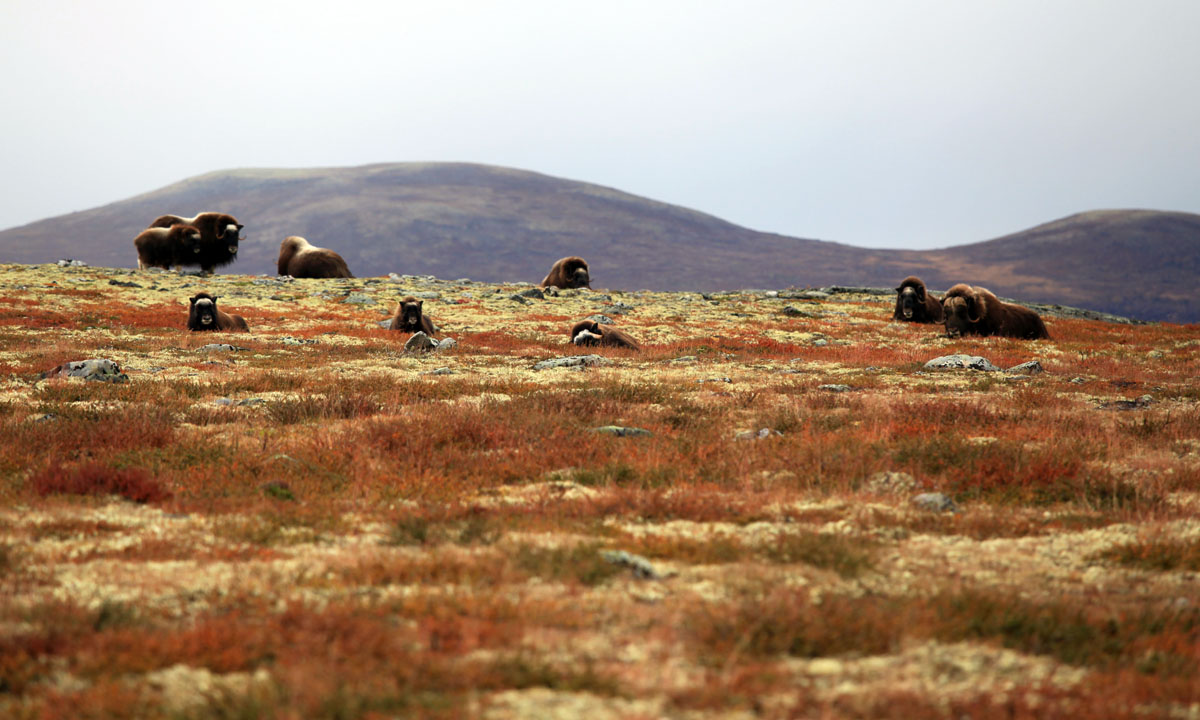
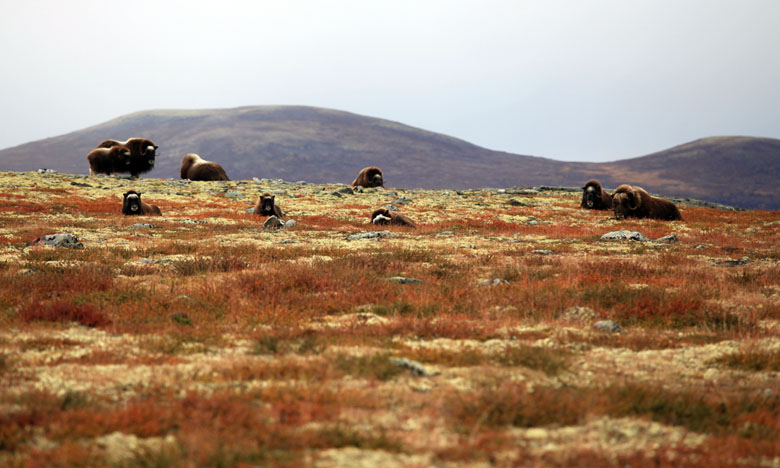
David Wilkinson


David Wilkinson
The Dovrefjell-Rondane corridor is Norway’s closest approximation of Montana’s Big Sky Country in the United States: a supreme stretch of wide-open, rolling mountainous terrain. The area is home to the mighty musk ox and has historical significance as the traditional trade route between Oslo and Trondheim.
For many years the Dovre Mountains were thought to be the highest in Norway. The Jotunheimen Mountains were later properly recorded as being higher—Dovrefjell’s highest peak, Snøhetta, is now officially the 24th tallest peak in Norway—but the Dovre Mountains forever symbolize the strength of the Norwegian people. Upon signing Norway’s first constitution in 1814, the delegates joined hands in unity and raised their voices with the cry, “Enige og tro til Dovre faller!” (United and faithful until the Mountains of Dovre do crumble!). They haven’t yet.
It’s easy to understand the miscalculations of the past—the Dovre Mountains are the tallest outside the Jotunheimen and feel as big as any in the country. And their grandeur is amplified by the fact that they remain one of Norway’s most off the beaten path mountain regions. The land is harsh, the distances between huts long, and the huts themselves offer no frills (they are of the self-service or no service variety). But for those who love adventure, solitude, and mountains in the raw, Dovrefjell is the place for you.
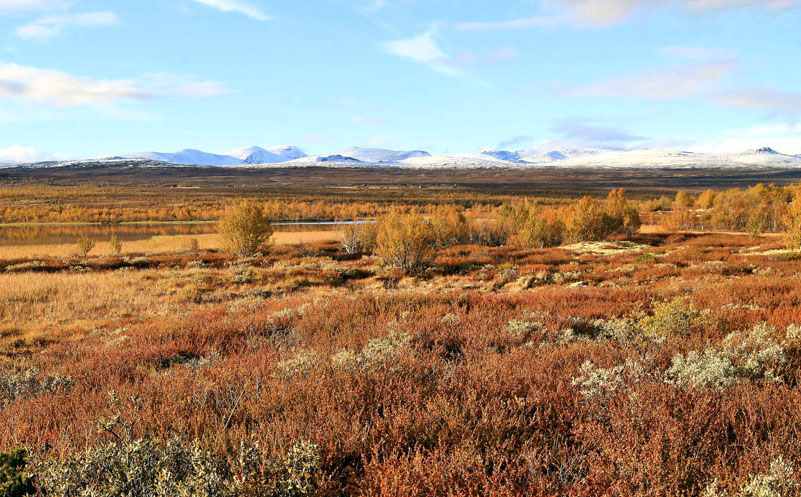
One of most memorable aspects of Dovrefjell—and that which makes it most famous today—is the musk ox. These Arctic beasts, survivors of the last ice age, were reintroduced in Norway in 1932 exclusively in the Dovre Mountains. There are only a handful of places on earth where musk oxen can readily be seen in nature, and the eastern valleys of Dovrefjell are among the most prime.
Situated on the highway E6 between the Jotunheimen and Trondheim, Dovrefjell and neighboring Rondane are bisected by the E6 for convenient access to both. Rondane National Park is south and to the east, and Dovrefjell–Sunndalsfjella National Park is just up the road to the west. The road winds through a flat area but the mountains get substantially more dramatic toward the interior.
Dovrefjell–Sunndalsfjella (1,693 km2) is not a massive park, but offers plenty of room to roam and terrific hiking and cross-country skiing. Kongsvold is an ideal point to set off, located directly on the E6 and a stop on the Norwegian national railway (Kongsvoll station). The first valleys get musk oxen safari traffic but the crowds dissipate within a few kilometers from the road.
Kongsvold to Reinheimen (see map)
One of the best one-night trips in Norway is the hike from Kongsvold to the Reinheimen hut (16 km each way), which all but guarantees musk oxen sightings and most likely without anybody else around. The hike is moderately difficult, mostly due to its length, and is the Dovre Mountains in a nutshell.
Dovrefjell Multi-Day Trips (see map)
From Reinheimen, a scenic and challenging route leads to the summit of Snøhetta (2,286 m) and onward to the Åmotdalshytta hut (14 km total). In clear weather the views from Snøhetta extend to the Jotunheimen’s Galdhøpiggen and Glittertend (the two highest peaks in Norway), and the mountains of Rondane, among others. There is also an easier low route directly from the Reinheimen hut to the Åmotdalshytta hut (10 km). DNT staffed lodge Snøheim opened a few years ago and created even more options in the area.
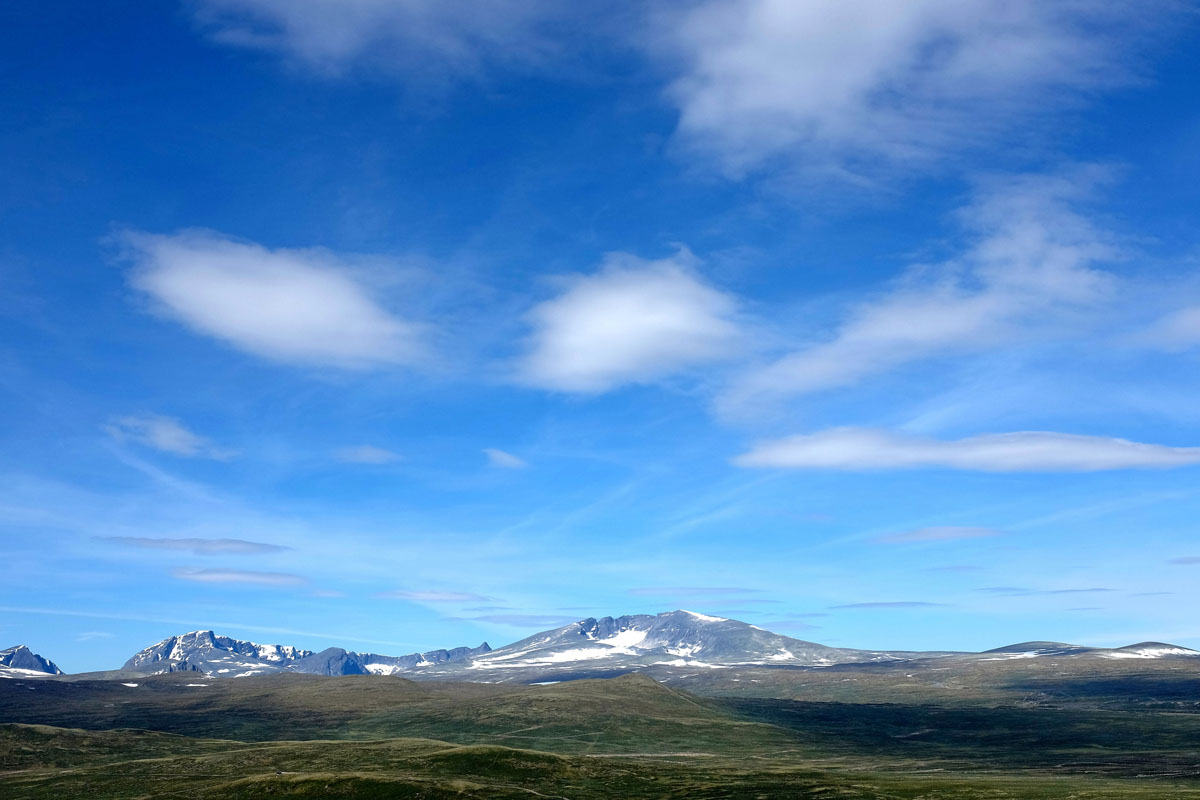
From Åmotdalshytta hut, the trail turns north toward self-service hut Gammelseter (passing the Loennechenbua emergency shelter). With 22 kilometers between huts this makes for a long, albeit scenic day on the trail. From Gammelseter it’s another 8 kilometers to the town of Gjøra where ground transportation is available. The total trip from Reinheimen to Gjøra takes 3–4 days; hiking experience is recommended.
The main trail through Dovrefjell starts just south of Kongsvold Fjeldstue and heads west. Those visiting the park strictly to see musk oxen should spend a few hours walking this trail and searching the interior valleys, particularly near sources of water. Depending on where the herds are that day, you may need to walk in a few kilometers or possibly more. If you spend a half-day the chances of seeing musk oxen are high.
Musk Oxen, having once roamed alongside sabor-toothed tigers and woolly mammoths, are now found in the remote Arctic north, including Norway, Alaska, Canada, Greenland, and Siberia (no other hoofed animal lives as far north). Individuals can weigh up to 400 kg (900 lb.), and live in herds numbering between ten and twenty.
Stoic as these large animals may be, musk oxen can move at speeds of up to 60 kilometers per hour (make sure to view from a distance). One of the reasons they have survived for so long is the lack of natural predators—only Arctic wolves, bears, and humans pose a threat.
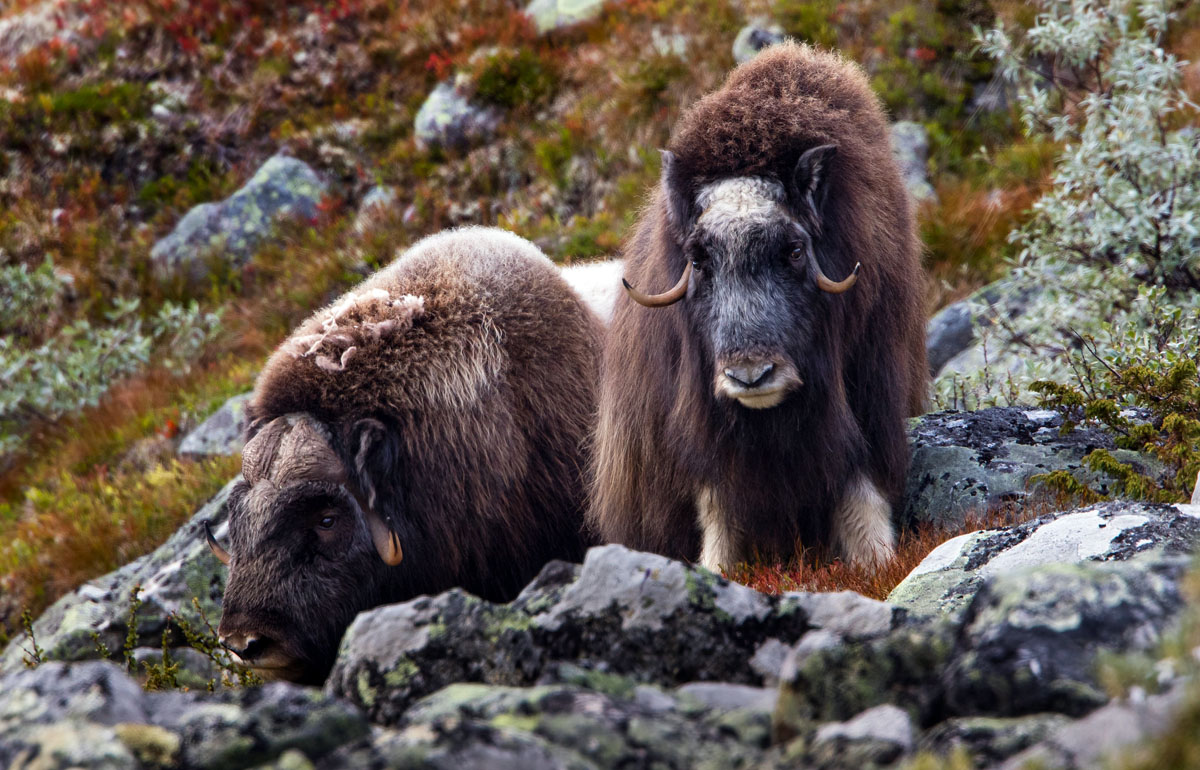
The musk ox is particularly well suited for extreme weather due to its long hair and sturdy undercoat that prevents frost and provides superb insulation. Their underwool, called qiviuq, is one of the softest and most expensive wools on earth, said to be ten times warmer than sheep’s wool.